This Thai coconut pudding recipe (kanom tuay) is a traditional dessert with coconut milk. It has a sweet bottom layer, a salty top, and a creamy, custard-like texture that’s naturally vegan and gluten-free.

Some Thai desserts like sticky rice with custard or khanom tom can take a while, but this one’s quick and pretty easy to make. It keeps well in the fridge too, so you’ll have something sweet on hand for days!
Kanom tuay is a Thai coconut dessert steamed in ceramic cups, made with rice flour and coconut milk. It has two layers: a mildly sweet base and a salty, creamy top.
Even though this dessert doesn’t use any eggs, it’s sometimes called Thai coconut custard online because of its soft, creamy texture.
About this Thai pudding
In this recipe, I’m sharing the boraan version (boraan means traditional or ancient) and we’re sticking to the classic method with two layers: white and golden. The white layer comes from coconut milk, while the golden layer gets its color and flavor from palm sugar.
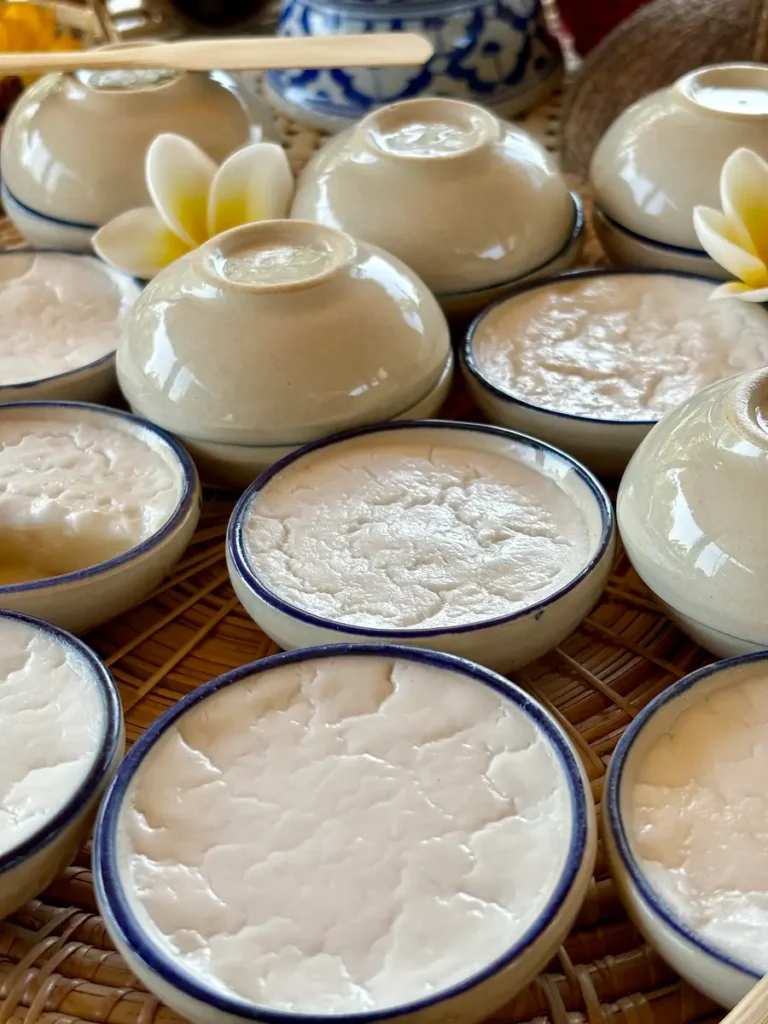
You’ll find many variations these days with pandan, pumpkin, or butterfly pea flowers, turning the golden layer green, orange, or purple. But this version keeps it authentic and close to how it’s been made for generations.
The process is straightforward when you think of it in two parts. First, make and steam the sweet golden layer. While that’s steaming, you can prepare the salty coconut layer, then pour it over once the base is nearly set. That’s it!
Ceramic bowls
Traditionally, this dessert is steamed in small ceramic bowls with a blue rim, you’ll often see them in Thailand at noodle soup stalls. The custard is usually poured just below that blue line.
These specific ceramic bowls can be found on Amazon, but feel free to use any small heatproof bowls you have. You might also find them at your local Asian grocery store.
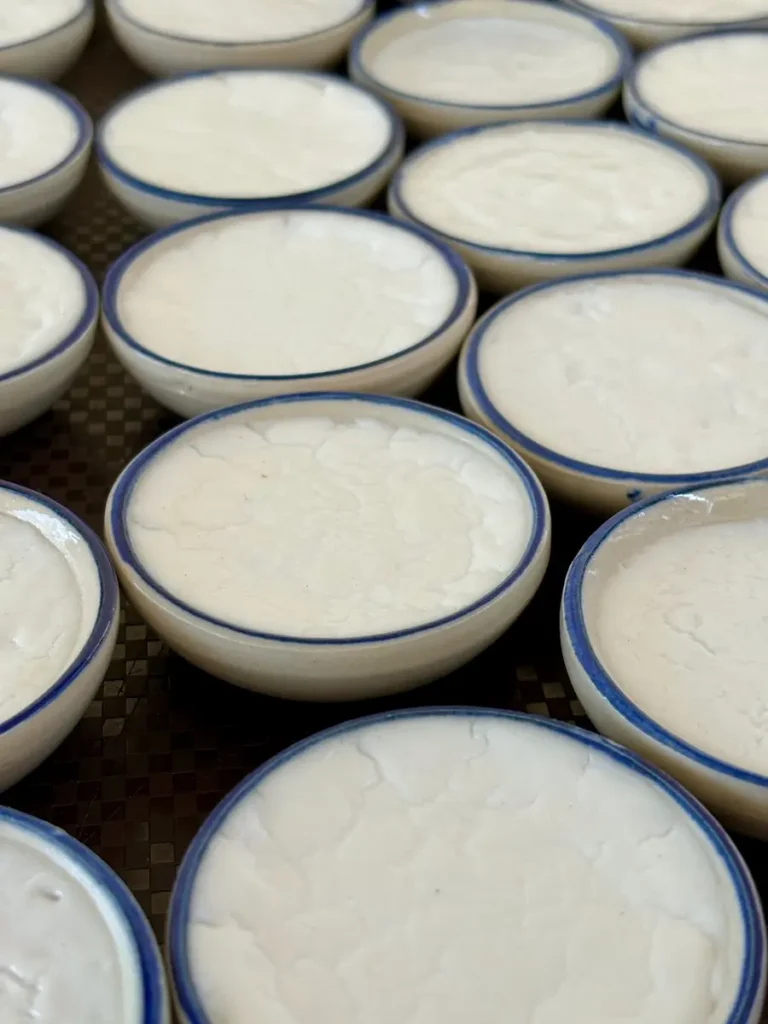
Ingredient notes and substitutes
Need a bit of guidance? The tips and step-by-step photos below will walk you through everything, or feel free to skip ahead to the recipe card at the bottom if you’re ready to make it.
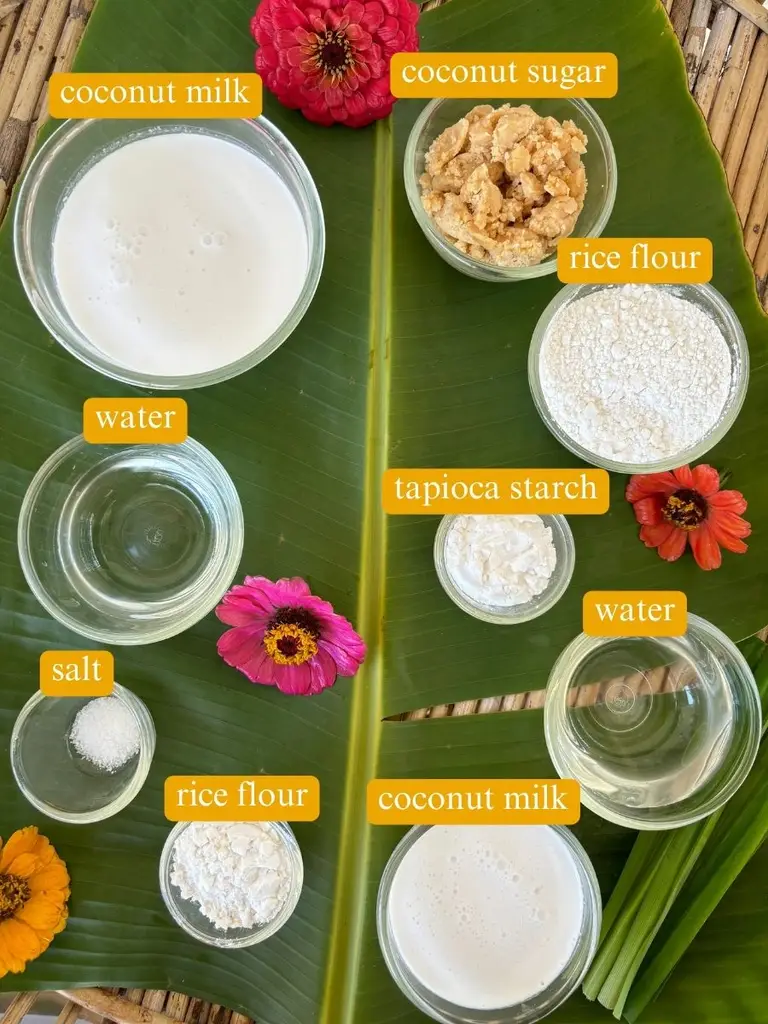
Bottom layer
- Coconut sugar – Adds a rich, caramel-like sweetness to the golden layer.
- Coconut milk
- Tapioca starch – Tapioca starch makes the bottom layer smooth and a bit chewy, and slightly thickens it so it’s not too firm or too runny.
- Rice flour – Gives the golden bottom layer a soft, pudding-like texture.
- Water – For dissolving the palm sugar and blending the ingredients.
- Pandan leaves (optional) – For fragrance, totally optional.
Top layer
- Coconut milk
- Rice flour
- Water
- Salt – The top layer is a bit salty and the bottom layer is sweet. Combine the two in one bite for a perfect flavor balance.
How to make Thai coconut custard
Heat the ceramic cups
Step 1: Warm your ceramic bowls in a steamer over medium heat for 10 minutes. This helps prevent the custard from sticking.
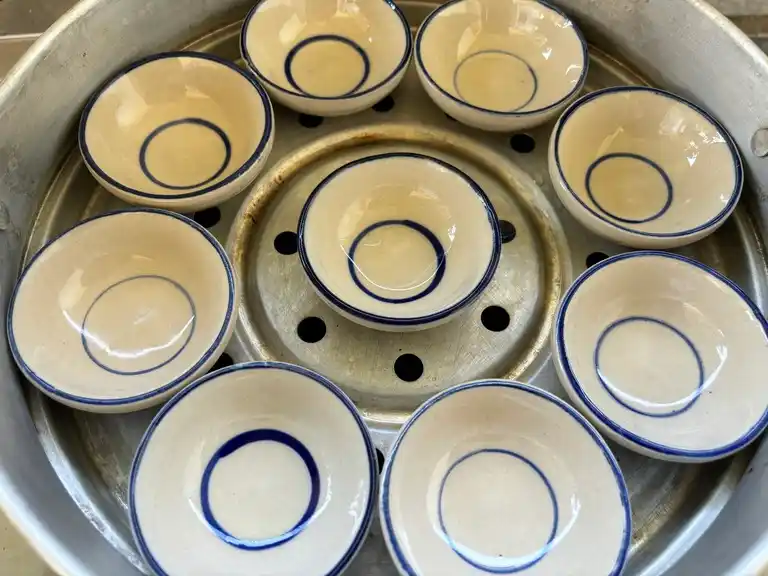
Make the bottom layer
Step 2: In a mixing bowl, combine coconut sugar, water, and pandan leaves (if using). Use your hand to mix and gently press until the sugar dissolves.
Step 3: Add the coconut milk to the sugar mixture and knead it in by hand until well combined.
Step 4: In a separate bowl, mix the tapioca flour and rice flour together. Slowly pour in the sugar-coconut mixture while whisking.
Step 5: Strain the mixture to remove any lumps.
Step 6: Pour just over 1 tablespoon of the bottom layer mixture into each preheated bowl. Steam for 10 minutes while you prepare the top layer.

Make the top layer
Step 7: In a new bowl, mix rice flour with salt.
Step 8: Gradually add water and coconut milk to the flour, whisking until smooth.
Step 9: Strain the mixture for a silky finish.
Step 10: Once the bottom layer is set, spoon the top layer mixture on gently, fill just below the blue rim. Steam for another 5–10 minutes until set. For a richer, oil-separated top, steam a bit longer. If you’re using larger cups than the traditional ones, you may need to steam a bit longer. Enjoy!
Note: It’s normal for cracks to appear on the top layer. This happens during the steaming process, avoid steaming for too long to limit cracks.

Storage
Store any leftover coconut milk custard in the refrigerator, covered, to keep it fresh. In Thailand, the desserts are typically stored by flipping one bowl on top of each one, this method prevents them from drying out.
Enjoy it within 3 days for optimal freshness. Before serving, let it sit at room temperature for a few minutes.
More Thai desserts with coconut milk
If you enjoyed this Thai coconut pudding recipe, I’d love to hear from you! Leave a quick star rating or comment below, it really helps! Follow me on Facebook, Instagram, and Pinterest.
Thai Coconut Pudding Recipe (Kanom Tuay)

Equipment
- Small ceramic cups (see notes)
- Mixing bowls (2)
- Whisk
- Sieve or fine mesh strainer
- Spoon or ladle
- Steamer with lid
Ingredients
Sweet bottom layer
- 1/2 cup coconut sugar, see notes
- 1/2 cup rice flour
- 2 tablespoons tapioca starch
- 1/2 cup water
- 1/2 cup coconut milk
- 2 pandan leaves, optional
Salty top layer
- 1 cup coconut milk
- 1/4 cup water
- 3 tablespoons rice flour
- 1/4 teaspoon salt
Instructions
Warm the bowls
- Place your ceramic cups into a steamer. Steam over medium heat for 10 minutes to prevent sticking.
Make the bottom layer
- In a bowl, combine coconut sugar, water, and pandan leaves (if using). Use your hand to press and mix until the sugar dissolves.
- Add the coconut milk and gently knead until everything is well combined.
- In a separate bowl, mix tapioca flour and rice flour. Slowly whisk in the sugar mixture until smooth.
- Strain the mixture to remove any lumps.
- Pour just over 1 tablespoon of the mixture into each warm bowl. Steam for 10 minutes while preparing the top layer.
Make the top layer
- In a clean bowl, mix rice flour and salt.
- Gradually whisk in water and coconut milk until smooth.
- Strain the mixture to ensure a smooth texture.
- Once the bottom layer is set, spoon the top layer mixture on top until just below the blue rim.
- Steam for 5–10 minutes more, or longer if you like the coconut oil to rise and separate slightly. If you're using larger cups than the traditional ones, you may need to steam a bit longer.
Cool and serve
- Let the pudding cool completely before serving. You can enjoy it at room temperature or chilled.
Notes
- Use the nutrition card in this recipe as a guideline.
- The top layer is a bit salty and the bottom layer is sweet. Combine the two in one bite for a perfect flavor balance.
- Coconut sugar





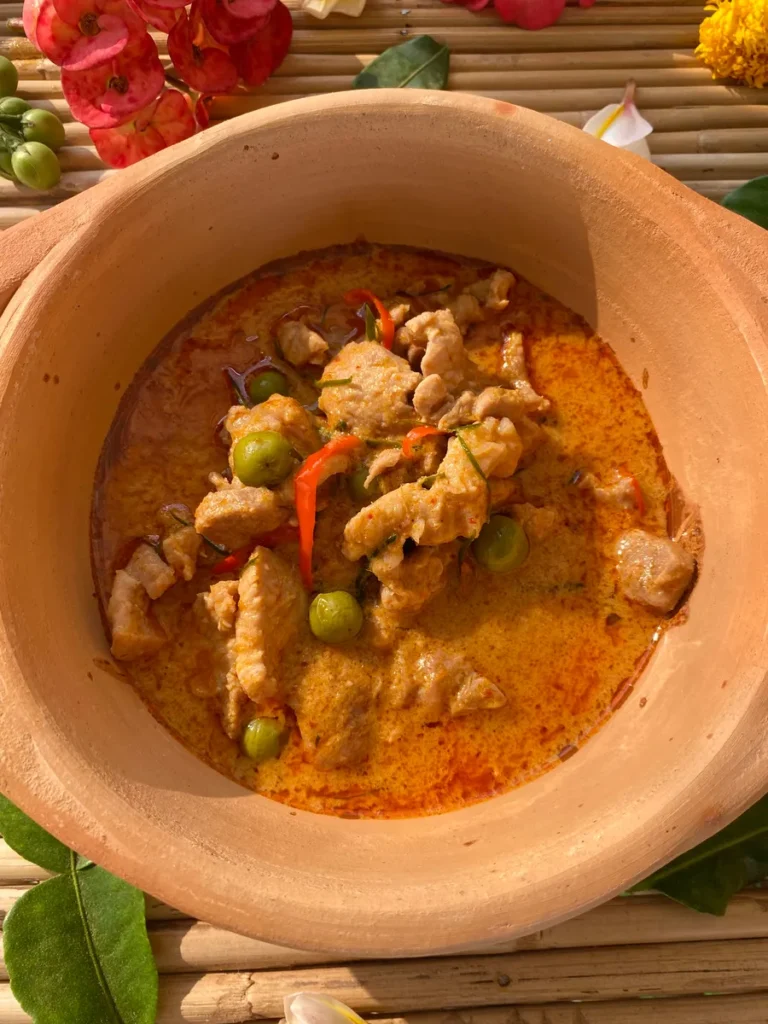
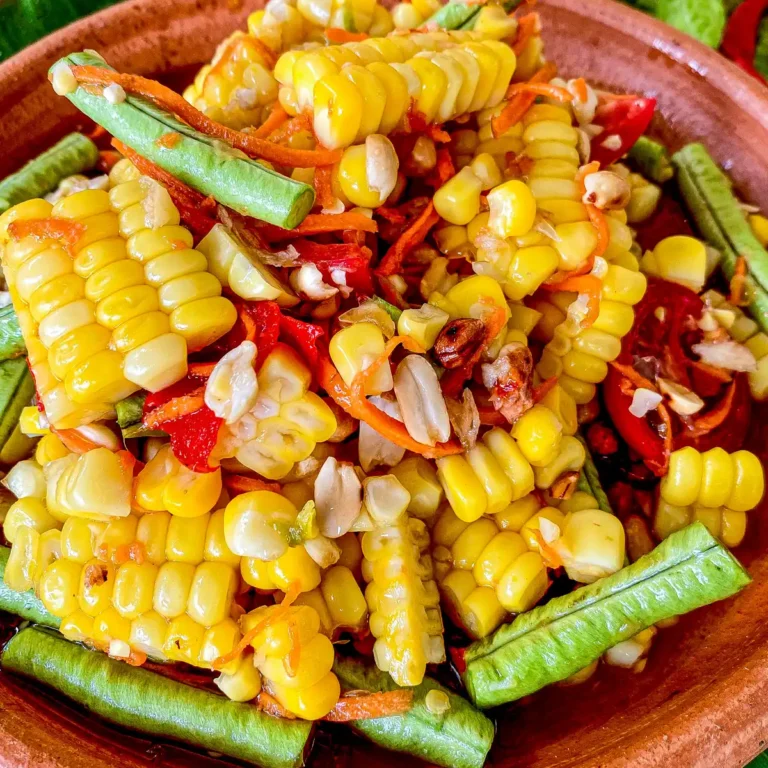
Hi there! Great recipe. I found that the top layer wasn’t setting after 10 minutes. Any suggestions?
Thank you! Did you use the Thai ceramic cups? If you’re using different (larger) cups, the top layer will need more time to set.